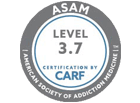Preliminary estimates released this month from the Centers for Disease Control and Prevention (CDC) suggest that deaths from opioid overdose may be falling, despite a ten percent increase in overdose death rates in 2017. A record number of Americans died from opioid overdose last year, according to the CDC data, and the 72,000 deaths number more than peak yearly death totals from HIV, car accidents, and gun-related deaths.
What caused the increase? More and more Americans are using opioids, and the drugs themselves are becoming deadlier, as fentanyl adds a whole new level of risk to heroin, cocaine, and methamphetamine, drugs that are already lethal on their own. Fentanyl and other opioid analogues are even being cut into benzodiazepines, like Xanax, and the cheap, often foreign-made substances are undetectable without testing.
Some states have made addiction treatment and public health campaigns a priority, an encouraging step when national action seems to be lacking and ineffective, even after President Trump declared the opioid crisis a national public health emergency last year. The number of opioid users has been going up in most regions, but not at the exponential rate of increase in overdoses from 2016 to 2017; most of the reason for the ten percent change appears to be the drug supply itself and how it is changing in volatility.
The unpredictability of drug potency and how it varies by batch is worrisome and underscores existing concerns. The appearance of fentanyl across drug supplies is inconsistent, but consistent— it is unknown where and when it will show up, but it continues to show up, sometimes killing dozens in the same city in just days. The CDC’s estimates show a sharp increase in synthetic opioid–related deaths, but a decline in heroin, prescription opioid, and methadone deaths. Whether this can produce a longer-term downward trend depends on the drug supply and how it rises or falls.
Overdose increases may not continue
Regional action is a big part of the optimism that opioid overdose will not continue at the rate that it is taking place. Death levels may, in fact, plateau by the end of 2018, according to the CDC estimates. Certain states, such as Ohio, have changed their approach to fighting the opioid epidemic by allocating state funds, as well as utilizing federal funds—nearly $1 billion in grants from the Substance Abuse and Mental Health Services Administration were made available for use in 2017 and 2018— toward abuse-fighting efforts, such as expanded access to Narcan and increased addiction treatment resources.
There are many proposed opioid bills floating around the House and Senate, but which ones Congress will actually pass and which ones will actually help curb the opioid crisis remain uncertain. Most involve limiting opioid prescriptions but some call for provisions that would expand treatment for those with an opioid addiction.
The federal government launched a national anti-opioid campaign in partnership with the Truth Initiative in June. The ads target young adults and depict real-life addiction stories, but there have not been any recent reports on the effectiveness or response to the ads.
Some argue that stigma around addiction is preventing bills from passing and perpetuating gridlock. There are numerous stigmas surrounding addiction, but whether or not these biases have anything to do with congressional inaction is uncertain.
At Royal Life Centers at Puget Sound, we are committed to providing the best addiction treatment to anyone who needs it. We are a full-service drug and alcohol medical detox and residential inpatient facility and treat dependence on opioids, methamphetamine, benzodiazepines, cocaine, and alcohol. Please reach out to us at (877)-RECOVER at any time with questions or concerns that you may have about beginning your recovery journey.












